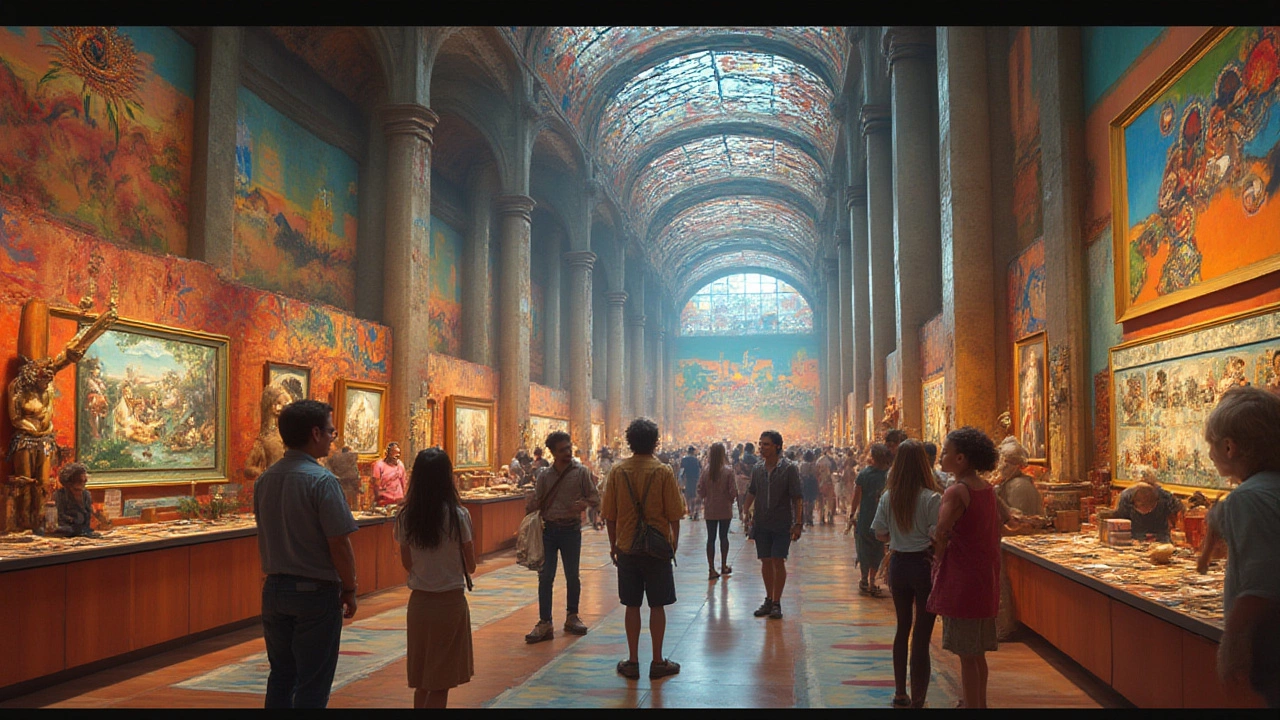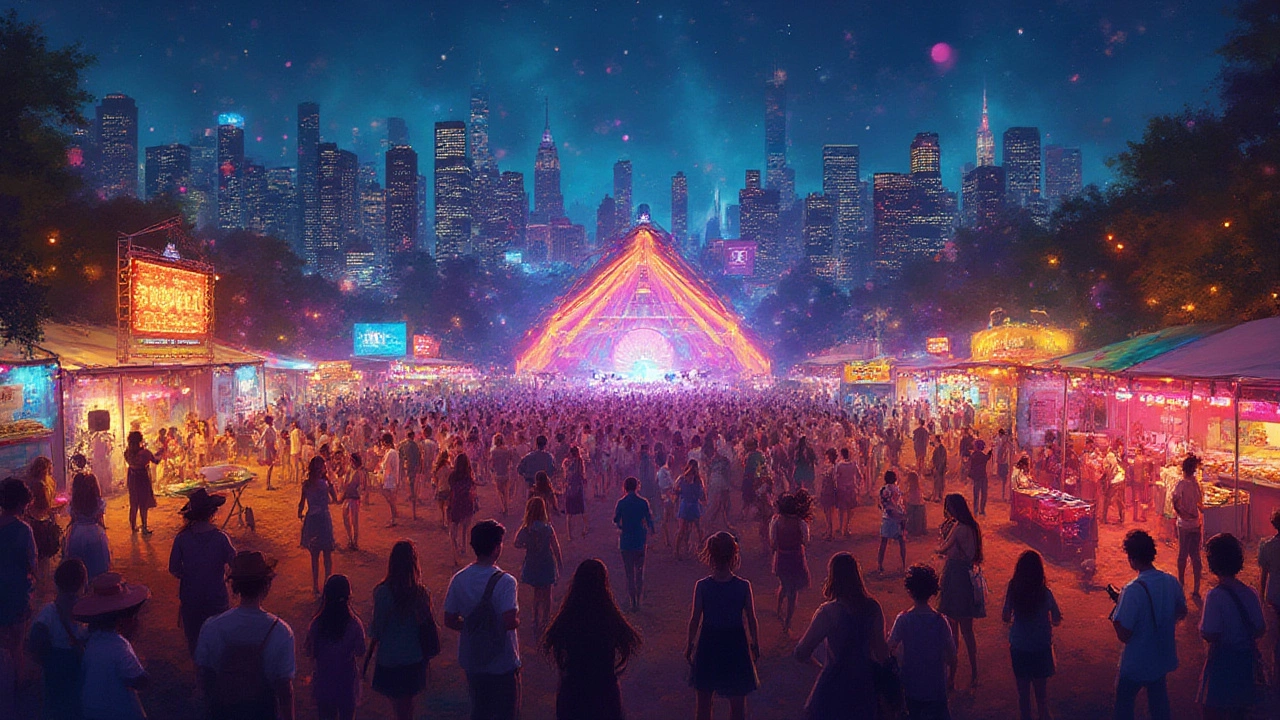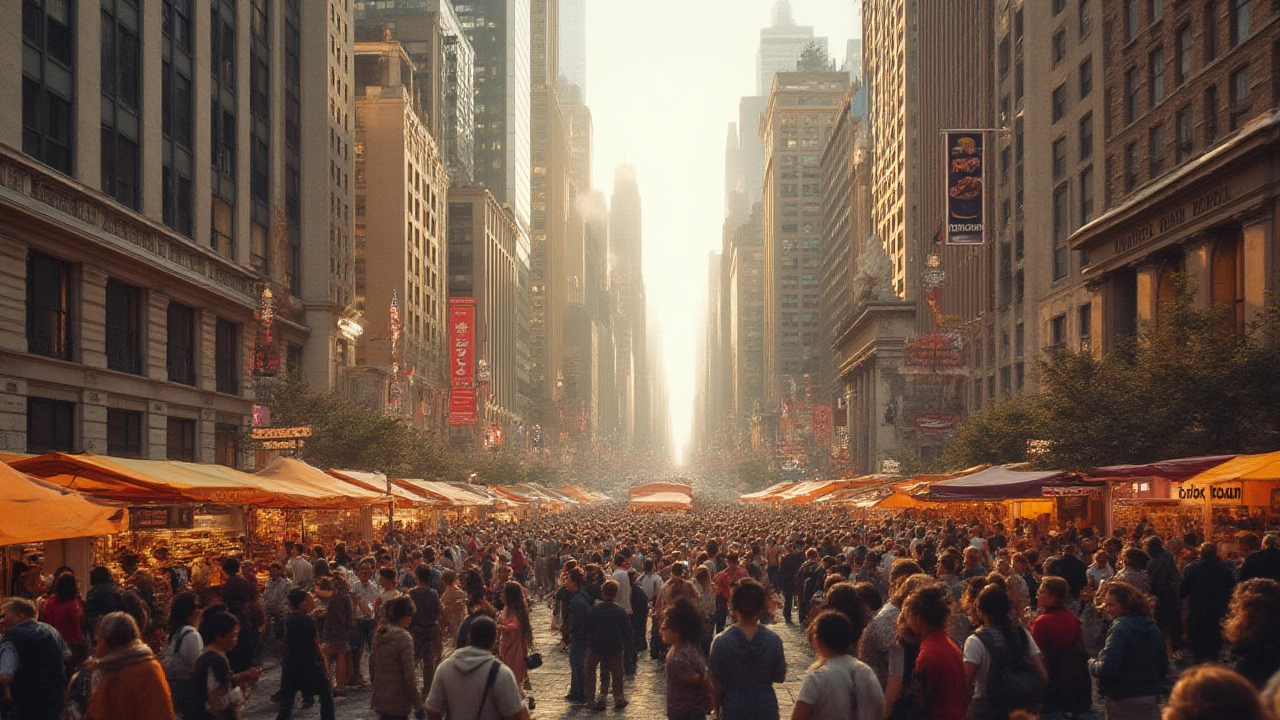You’d think picking the one US city with the most culture would be simple, like grabbing your favorite cereal off the shelf. But America’s cities each pack their own punch. When you ask which city in the US has the most culture, you’re stepping into a thunderstorm of opinions, heated rivalries, and bold claims. Chicagoans swear their jazz roots and architecture beat anything on the coasts. New Yorkers say nothing compares to the big apple’s lights, diversity, and museums. Los Angelenos shrug and point to their endless waves of movies, tacos, and art. The conversation spirals into every art gallery, soul food joint, poetry reading, and neighborhood street parade across the country. There’s no simple answer, but let’s crack open what makes some cities buzz with creativity, energy, and that wild, magnetic cultural pull.
What Does "Culture" Even Mean for a US City?
The word "culture" gets tossed around like confetti, but what does it actually mean when you’re talking about a whole city? Forget museum guides in paper hats. Culture is the rhythm of daily life—the food, the music, how people gather to celebrate or protest, what languages you hear on the street. It’s seen in murals, festivals, neighborhood dance classes, and grandma’s recipes handed down through the generations.
But if you want numbers, here’s how experts tend to measure a city’s culture:
- Number and diversity of museums, theaters, concert venues, and galleries
- Range of cuisine, languages, and traditions across the population
- Regularity and originality of festivals and public events
- Historic and ongoing impact on arts, music, literature, and film
- Immigrant population and integration
- Economic support for artists and creatives
Check out a snapshot from the 2024 Cultural Cities Index to see how some of the biggest names compare:
| City | Museums (Major) | Annual Festivals (>10,000 attendance) | Languages Spoken | Residents Born Outside US (%) |
|---|---|---|---|---|
| New York, NY | 83 | 300+ | Over 180 | 36.8 |
| Los Angeles, CA | 68 | 220 | More than 140 | 39.7 |
| Chicago, IL | 60 | 200+ | More than 70 | 20.7 |
| San Francisco, CA | 56 | 145 | More than 110 | 35.2 |
| New Orleans, LA | 14 | 80+ | 45 | 8.8 |
The chart shows US cities with most culture aren’t just big in population—they’re big in global connections, too. A city like New York isn’t just tall buildings and Wall Street—walk down any block in Queens and you might hear five languages. Hop on a train in LA and you’ll taste Armenia, Thailand, and El Salvador by lunchtime. It’s the daily mash-up that makes these cities never feel stale.

The Usual Suspects: Why New York, LA, and Chicago Always Top the List
Let’s face it—every “culture capital” list is a battle between New York, Los Angeles, and Chicago. If you dropped a pin on a map of art, music, or theater in the US, odds are you’d land in one of these places. But don’t just take the locals’ word for it. Each city brings its own flavor, shaped by immigrants, artists, and dreamers:
- New York City is a 24/7 everything machine. Broadway’s packed with Tony winners, the Met Museum is stuffed with 5,000 years of art, and whole neighborhoods feel like landing in a new country (try Chinatown, Little Italy, El Barrio, or Little Guyana in Queens). More than 800 languages are spoken across the five boroughs. One in three residents is foreign-born. Events like the West Indian Day Parade, Puerto Rican Day Parade, and Lunar New Year block out entire avenues. Hip-hop was born here. Soho art galleries launch the next Basquiat. You could spend years in New York and not scratch the surface.
- Los Angeles is more than red carpets and surfboards. The LA County Museum of Art, the Getty, and Museum of Latin American Art are just a taste. Its Eastside is packed with murals—public art is everywhere. Food? You’ll find Korean BBQ next to Oaxacan mole next to vegan burger joints. Venice Beach poets and DTLA theater geeks put on shows that end up setting national trends. Its street festivals, from LA Pride to Dia de los Muertos, draw crowds from all over the state. And yes, you’re always bumping into actors and musicians chasing dreams.
- Chicago built its culture through hustle. Blues and jazz moved up the Mississippi from the South and made the city sing. Public art like the Bean (Cloud Gate) and endless murals brighten up drab walls. The city’s architecture is a storybook—Frank Lloyd Wright, the Sears Tower, the first skyscrapers. The world’s largest free outdoor food festival? That’s Taste of Chicago. The city celebrates St. Patrick with a green river. Neighborhoods are tight-knit: Greek Town, Pilsen (Latino), Ukrainian Village, Chinatown, and Bronzeville each have their own flavor. The language of "The City That Works" is food, music, and laughter, making everyone feel at home.
But here’s the kicker: It’s the local energy that keeps these cities pulsing. You’ll find open-mic nights under subway stations, poetry in laundromats, secret rooftop jazz jams, and food trucks inventing tomorrow’s flavor. That’s living, breathing culture—not just exhibits behind glass.

Dark Horses and Hidden Gems: Cities Breathing Culture Beyond the Obvious
Culture isn’t always about being the biggest. Sometimes it’s about having a unique story to tell—or being so stubbornly authentic you can turn a block party into a phenomenon. With that in mind, plenty of other US cities punch far above their weight.
- New Orleans, LA—Some call it the soul of America. The birthplace of jazz, home of Mardi Gras, and a city where people parade just for fun. Gumbo and po’ boys spill out everywhere. Historic French Quarter blues bars and second-line parades are woven into daily life. Street music happens everywhere—kids with trumpets, old-timers with accordions, and marching bands who don’t need an excuse to play. There’s a festival almost every month—some estimates say more than 130 a year, including the Essence Festival and Satchmo SummerFest. Post-Katrina, the city doubled down on its traditions, making sure no storm could wash away its spirit.
- San Francisco, CA—It may only be seven miles across, but it packs in world-class ballet, Chinatown’s mooncakes, and Mission District murals. The city gave birth to the Beat poets, hosted the Summer of Love, and became a tech melting pot. The cast of characters is wild: you’ll meet hippie guitarists and coders in the same bar. Food is wild and fearless—dim sum one day, vegan sushi the next. Annual events like the Folsom Street Fair and Chinese New Year Parade explode with color.
- Philadelphia, PA—The cradle of liberty? Sure. But it’s also got live jazz bars tucked under centuries-old bricks, mural-lined alleyways, and block parties that feel like family reunions. Try the Reading Terminal Market for food from every continent. Latinx, West African, Vietnamese, and Italian communities keep old traditions alive and invent new ones—sometimes in the same backyard.
- Houston, TX—Who knew? Houston is one of America’s most diverse cities, with over 145 languages spoken and neighborhoods from Little India to Chinatown to Alief’s West African markets. The Houston Rodeo brings in millions, but so does the city’s art scene. Annual events like the Caribbean Festival and Houston Art Car Parade show off that creative mash-up. The food is a blend: brisket tacos, banh mi, and Somali stews, all in one city block.
- Miami, FL—It’s not just beaches and pastels. The art deco scene might make your eyeballs pop, but Miami’s Latin and Caribbean culture mixes in dance, music, and – oh man – food. Art Basel Miami is the Super Bowl of hip artists and collectors. Little Havana, with its ventanitas pouring Cuban coffee 24/7, is always buzzing. Calle Ocho hosts festivals that spill over for entire weekends and draw international crowds.
Let’s not forget Seattle (birthplace of grunge), Austin (live music capital), or Minneapolis (where Prince changed the world). Each city is a cultural laboratory, mixing ingredients you didn’t know blended until someone tried.
If you want to tap into a city’s culture quickly, skip the tourist traps and:
- Eat at mom-and-pop restaurants, especially in neighborhoods away from downtown
- Check out local markets or art fairs for handmade everything
- See if there’s a community festival, parade, or block party (most are open to visitors)
- Find out which local publication lists underground events—they’re usually packed with energy
- Take public transportation or walk—strange conversations and performances happen everywhere
Can one city claim "the most culture"? That depends on how you define it. Some go for the wild variety of New York, the creative juices of LA, or the street rhythm of New Orleans. But the real winner is always the city that feels alive around the clock, dares you to try new things, and never lets you feel like an outsider. From the jazz clubs in Chicago to the drag brunches in Houston, culture in the US is always growing, always tangled, always one step ahead.
